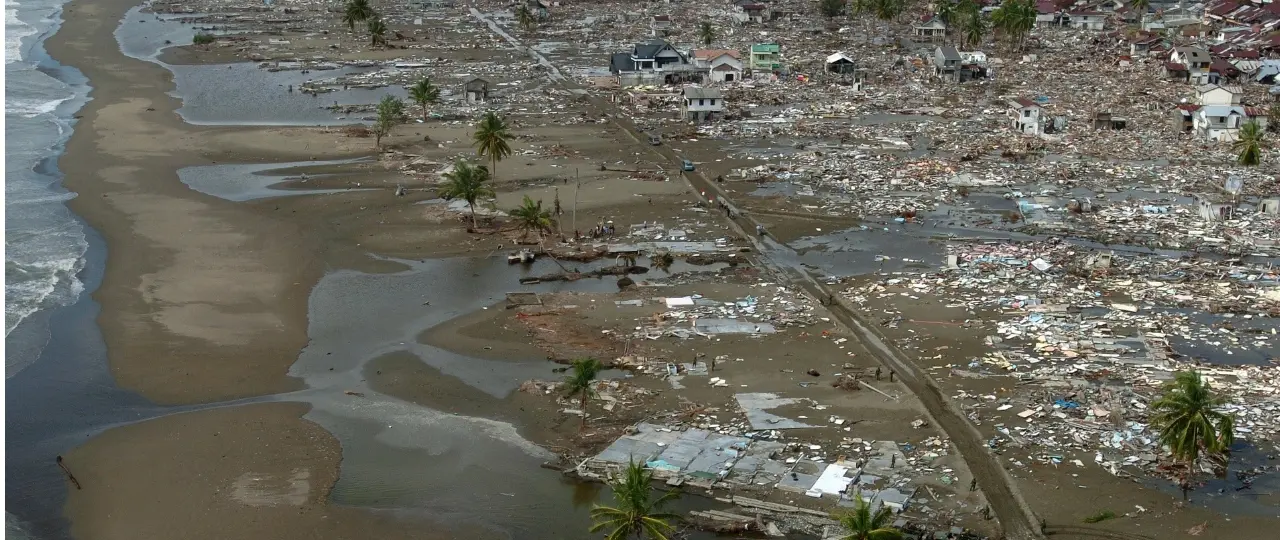Earthquake and tsunami disaster prevention field20230403
Tsunami height and flooding area prediction services
Field:
Natural disaster prevention and mitigation business > Earthquake and tsunami disaster prevention field
Keyword:
Overview
The Act on Development of Areas Resilient to Tsunami Disasters, which was enforced in December 2011 in response to the large-scale tsunami disaster caused by the Great East Japan
Earthquake, requires prefectural governments to establish and announce inundation areas and depths for the "largest class of tsunami" which can cause enormous damage, and to
promote the development of areas resilient to tsunami disasters and designate tsunami disaster warning areas.
OYO Corporation provides various tsunami disaster prevention
solutions, from wide-area tsunami forecasts related to national earthquake disaster prevention strategies to detailed inundation simulations for prefectures, local governments, and
the private sector.
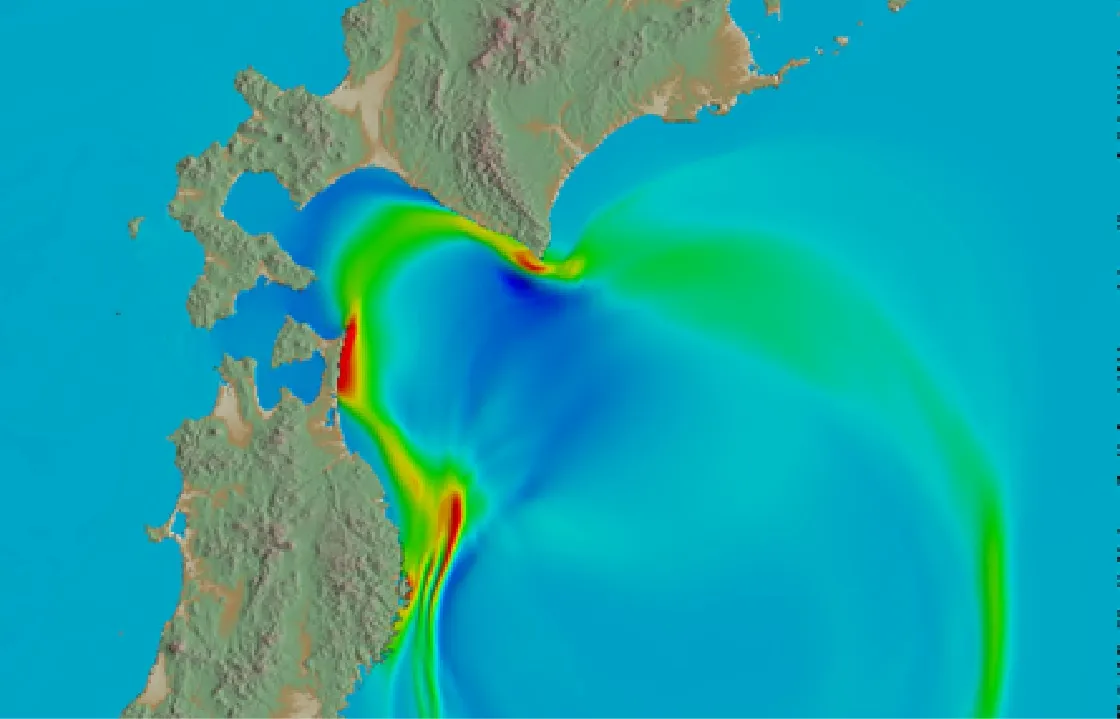
Features
First in Japan in technical skills and number of expert staff
Wide-area tsunami prediction related to the national earthquake disaster prevention strategy requires extremely advanced calculation and simulation technology using supercomputers, etc. OYO Corporation boasts the largest scale and achievements in Japan in terms of the number of such technologies and expert staff at our company.
Simultaneous analysis of seismic motion and tsunamis
Taking advantage of the strengths listed above, one of OYO Corporation's major characteristics is our ability to simultaneously conduct a comprehensive analysis of seismic motion
and tsunamis.
In addition to predicting tsunami heights and inundation areas, we can comprehensively assess the risks of earthquakes and tsunamis by predicting long-period
seismic motions that occur in massive earthquakes and seismic motions using high-precision geotechnical models. This makes it possible to formulate even more effective disaster
prevention measures.
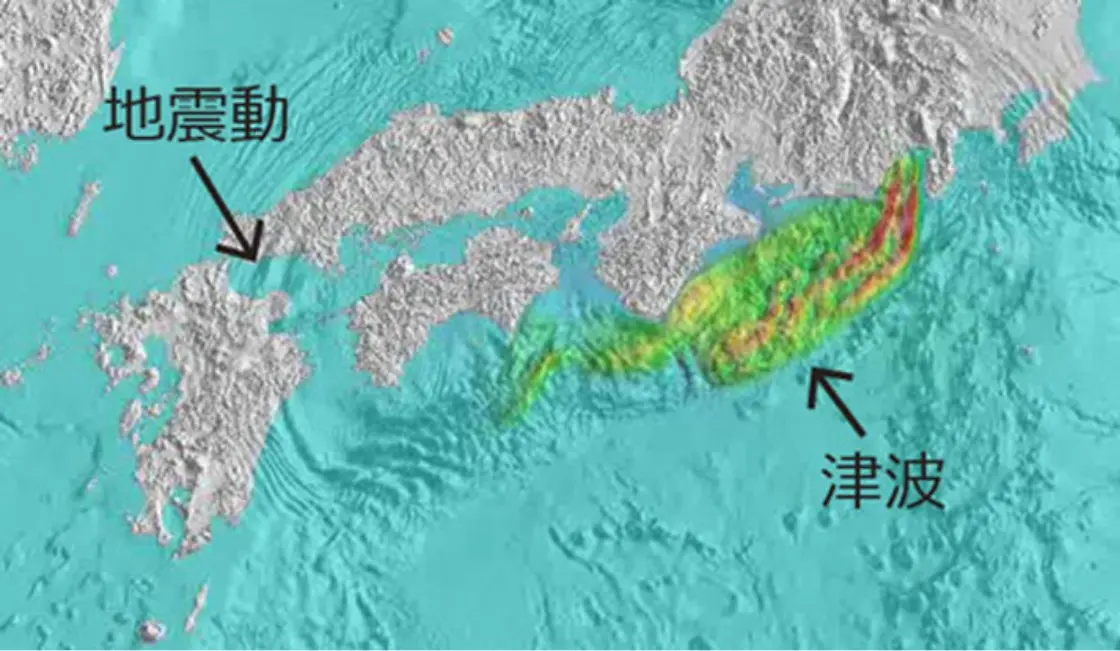
Cutting-edge probabilistic tsunami prediction
With conventional scenario-based predictions, there is a possibility that unexpected items will occur in the prediction results. On the other hand, probabilistic tsunami hazard evaluations that have been conducted overseas can eliminate unexpected items and enable more quantitative risk evaluations. OYO Corporation is also conducting probabilistic tsunami hazard evaluations along the coast of Japan with the National Research Institute for Earth Science and Disaster Resilience.
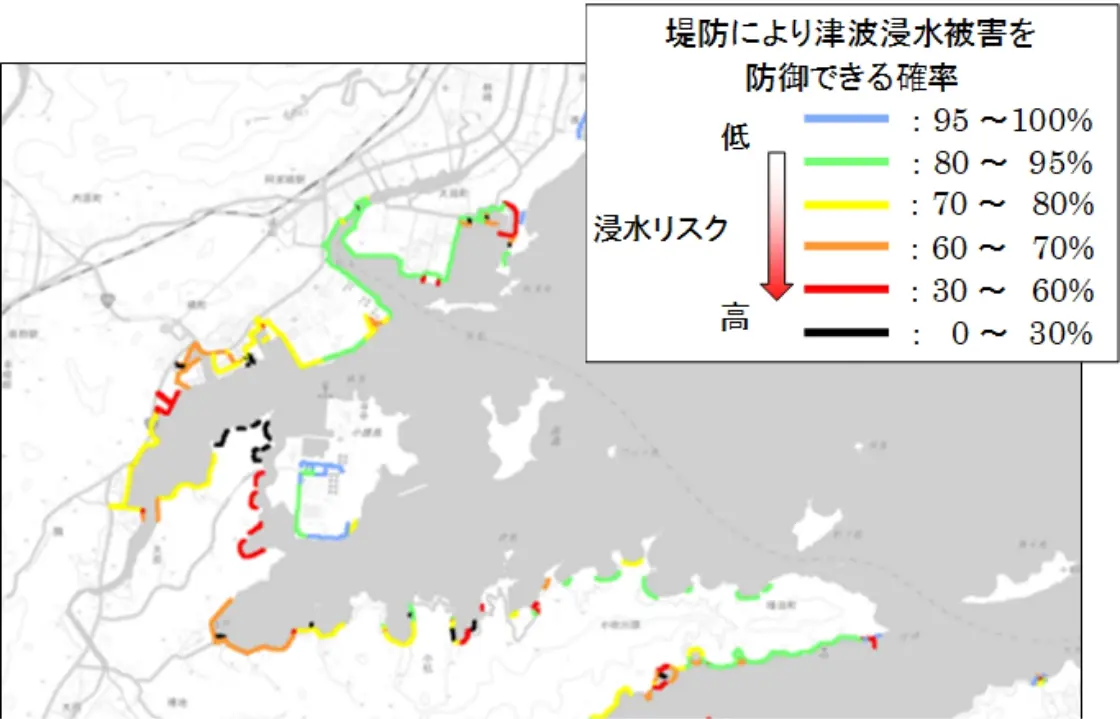
Example of tsunami hazard curve for a Nankai Trough Earthquake:
Create coastline tsunami hazard curve for every 50-meter mesh segment
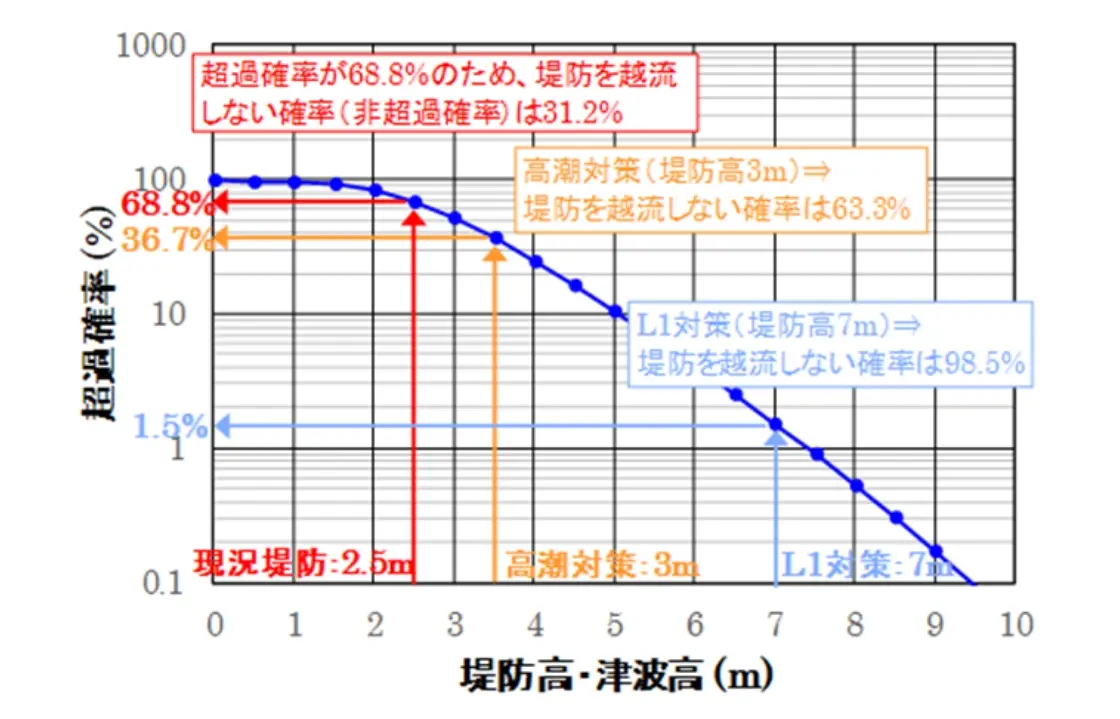
Results of inundation risk evaluation:
Example of evaluating the risk of coastline flooding from the hazard curve for each 50-meter mesh segment. However, the levee height is simplified and is not the actual value.
